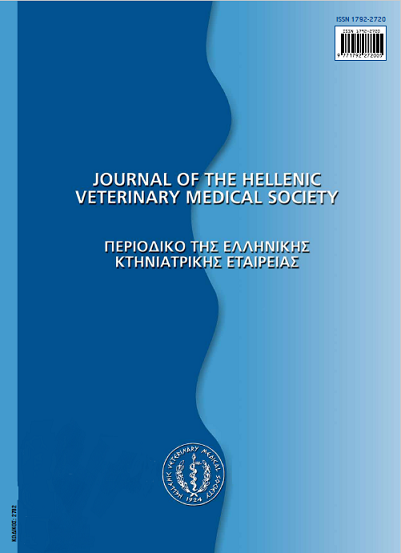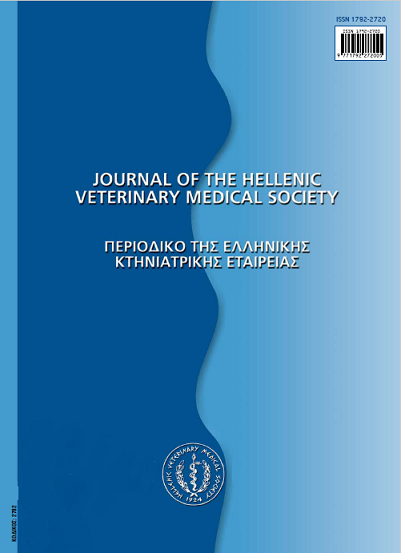Surgical excision of skin folds from the head of a goldfish Carassius auratus (Linnaeus 1758)
Résumé
Goldfish Oranda very often exhibit skin overgrown folds in the dorsal head area. In many cases, these folds extend laterally towards the periocular area resulting in tunnel vision and thus stress of the fish. A goldfish, about four years old, with overgrown skin folds around its eyes underwent a surgical excision of these folds. Prior to surgery and the last three consecutive days the fish was treated with the wide spectrum antibiotic nifurpirinol (Aquafuran) by bath. After the fish was anaesthetized with phenoxyethanol, the excessive skin folds were excised with a scalpel. Histological examination of the excised skin revealed hyperplasia of the epidermis and excessive subcutaneous fat tissue. During the first 24 hours after surgery the fish started to eat. In the next few days, its appetite and overall behaviour showed significant improvement compared to those prior to the operation, while almost 12 months post operation, no new skin folds appeared around the eyes, a fact that indicates that the operation improved the life of the fish.
Article Details
- Comment citer
-
ANGELIDIS (Π. ΑΓΓΕΛΙΔΗΣ) P., VATSOS (Ι.Ν. ΒΑΤΣΟΣ) I. N., & KARAGIANNIS (Δ. ΚΑΡΑΓΙΑΝΝΗΣ) D. (2017). Surgical excision of skin folds from the head of a goldfish Carassius auratus (Linnaeus 1758). Journal of the Hellenic Veterinary Medical Society, 58(4), 299–305. https://doi.org/10.12681/jhvms.14992
- Numéro
- Vol. 58 No 4 (2007)
- Rubrique
- Case Report
Authors who publish with this journal agree to the following terms:
· Authors retain copyright and grant the journal right of first publication with the work simultaneously licensed under a Creative Commons Attribution Non-Commercial License that allows others to share the work with an acknowledgement of the work's authorship and initial publication in this journal.
· Authors are able to enter into separate, additional contractual arrangements for the non-exclusive distribution of the journal's published version of the work (e.g. post it to an institutional repository or publish it in a book), with an acknowledgement of its initial publication in this journal.
· Authors are permitted and encouraged to post their work online (preferably in institutional repositories or on their website) prior to and during the submission process, as it can lead to productive exchanges, as well as earlier and greater citation of published work.






